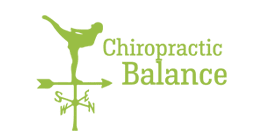Most of us know that standing is better for our back than sitting, therefore it is becoming more common for workplaces to offer stand-up desks. However at Chiropractic Balance we often find that people have never been shown what ideal standing posture is and their best efforts to 'sit-less' may be causing more damage than good.
In this article you will learn:
- How to stand correctly to maintain a healthy back
- How to improve standing posture if yours is not ideal
- Just what is so terrible about poor standing posture
Four Easy Ways to Stand Correctly for a Healthy Back
1. Start with your feet
Imagine your foot is approximately rectangle, and there is a point near each corner (big toe, little toe, outside heel & inside heel). These four points should be evenly weighted giving you a centered and balanced base of support.
- Most common imbalance: Greater weight on the heel, especially the outside (look at the wear on your shoes)
- Correction: Lean forward slightly, ensuring that there is weight in your big toe. When you lift your big toe you will slightly lose balance if doing correctly. Also standing on a rubber anti-fatigue is helpful especially on concrete floors.
2. Switch on your stomach muscles
The muscles that wrap around your lower back and abdomen are called your core. When you switch on your core it generally adjusts the curves in your low back and adds stability similar to the concept of a wearing a corset or scaffolding around a building.
- Most common imbalance: Poor core strength leading to the abdomen sagging forward and the bottom sticking out. This increases the pressure on your joints in your low back (sway back).
- Correction: Tighten your abdominal muscles and tuck your bottom under slightly.
3. Lift your breast bone
The centre of your breast bone or sternum (about 4cm down from the notch at the bottom of your neck between your collar bone) should be the most anterior or forward part of your body when standing.
- Most common imbalance: Sunken breast bone and rounded shoulders.
- Correction: Imagine there is a fishing line attached to your breast bone, pulling it up toward the sky. Breathe in and feel the centre of your breast bone lift. This should automatically bring your shoulders back in good alignment. As you breathe out, maintain breast bone position while letting your arms drop (to relieve shoulder tension).
4. Lift your head upwards
The ear should be in line with the shoulder when looking at the body from the side. Also the eyes should be balanced when looking at the body from the front.
- Most common imbalance: The chin poking forward causing the ear to be in front of the shoulder. This puts extra strain on your neck and upper back joints.
- Correction: Imagine a string attached to the top of your head that is pulling you toward the ceiling. Your neck and head should be straight and upright. Another way to achieve this is to tuck your chin slightly.
Standing with poor posture can be taxing on your body in many ways
- Increase strain on vertebrae, ligaments, discs and muscles
- Limited body range of movement
- Affecting circulation
- These factors can lead to early deterioration of vertebrae, pain, increased injury and quicker fatigue
Following the four ways to stand correctly may be very difficult or even impossible to begin.
You may need to start by getting your spine moving properly which may be achieved by getting a spinal assessment from a Chiropractor and also getting a rehab program to improve mobility and strength.
Even though it may take time, don't give up as your posture can be changed and the benefits can be enormous and well worth the effort for long term spinal health, decreased pain and more energy.


